Wayne C. Allen's Blog, page 15
June 15, 2021
5 Key Concepts for Zen Living
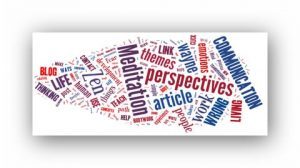
 Psst! Hey!
Psst! Hey!** Want more great writing designed to help YOU to shift your behaviour?
** Want to learn how to find, build or deepen your principal relationship?
** Want to know more about Zen principles, living and being?
I thought I’d write a “Start Here” article,” — 5 Key Concepts for Zen Living — to help you get on board with some of our perspectives. This article contains multiple links to our site, and to other BLOG articles. Click around and enjoy!
1- Zen Living — Perspective Colours Everything We see what we see
We see what we seeI write from several perspectives. First of all, I was a Humanistic, Transpersonal Psychotherapist, until my retirement in 2013. This is baffle-gab for assuming that human nature has within it a pull to things which go beyond the rational and observable.
I also ascribe to Zen Buddhism, and this perspective on being colours my interest in simple presence, meditation, and experience versus thinking.
Thus, my book, Half Asleep in the Buddha Hall
I’m in relationship with the lovely Darbella MacNaughton (a.k.a. Dar), and she’s been my favourite person since 1982. We use a communication model that has yet to fail us, and our approach to each other is to encourage exploration and self knowing, while keeping each other in the loop through total honesty.
OK, so those are a few of my perspectives.You can read about the communication model we use in my book, The. Best. Relationship. Ever.
I am clear that these are not optional extras for me–these are my core beliefs / ways of doing life / ways of relating. Everything I write in some way reflects these perspectives, as well as a host of lesser themes.
If you have not explored your perspectives, and instead think that what you believe matches what others believe, you need to rethink it!
I was just talking to Darbella about a friend not liking what she heard from her partner. Dar said (with a big, cheesy grin on her face…), “Tell her to write him a script and give it to him so he says the right thing next time!”
I hope I don’t have to say she was being ironic. We often do not hear what we want to hear, and assume the other person is wrong. Hint: they’re not. They just have a different perspective.
2- Zen Living — Life is Linear, and also a Spiral I could swear I saw that problem yesterday…
I could swear I saw that problem yesterday…One of my favourite writers is Abraham Maslow. His Hierarchy of Needs is crucial for our understanding of human development. I wrote about his hierarchy a while back, and also looked at his work as it relates to Bodywork.
Humans develop through various stages, some of which are obvious. Physical development, for one, follows pretty universal rules, as the cliche “You have to walk before you run” points out.
Mental and spiritual development also follow patterns or stages, and what’s odd is that most people do not put much energy into this work. They assume that things are supposed to magically work out, and when they don’t, they blame others.
Our approach is simple.We teach full and direct self responsibility.
Part of this is to accept that your job, your path, is to figure yourself out, while at the same time moving “up the spiral” — in other words, we re-visit familiar themes throughout life, and as we move past these themes, we then confront the same issue from a more complex point. It’s like walking up a spiral staircase.
3- Zen Living — Meditation teaches us self-knowing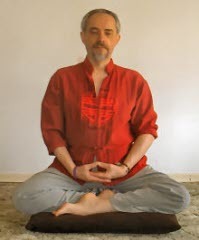 It is…what it is
It is…what it isMany people have heard of the hyped up versions of meditation. You know it’s one of those if there is a promise of future rewards connected to the meditation process.
If you meditate to: relax, feel better, become spiritual–you are missing the boat.
Meditation is a process of slowing down, and simply sitting (zazen.)If you’d like additional Meditation information, it’s available through this link
In this process, you engage fully with living, and part of that is that you are present with all of you–with your thoughts, your emotions, your aches and pains. Meditation is “being present with.”
If you spend sufficient time meditating, you’ll notice that you do actually get more peaceful and clear, yet the zazen is “in and of itself.” This process allows us to see just how busy our minds are, and gives us the space and opportunity to “just notice.”
4- Zen Living — Breathwork and Bodywork teach us about holding and being free. Hands on is best
Hands on is bestThere’s a whole section on Bodywork on one of my websites. You can spend many profitable hours there, learning about where and how you hold tension and emotions in your body.
There are several ways of working with the body, from Reich’s idea of character armour and use of pressure to release blocked emotions, to acupressure–which helps with blocked chi, to thinking in terms of Chakras. If you click this link, you’ll find an entire series of articles on the topic of chakras.
5- Zen Living — Communication requires a commitment to honesty Get your words on
Get your words onWe use a communication model that was developed by Ben Wong and Jock McKeen at The Haven. It’s easy enough to learn, and is helpful for, for instance, teaching the difference between an emotion and an interpretation.
For example, people say, “You make me sad!” This is untrue. I make me everything!
In a very real sense, I choose sadness in reaction to my judgement of what I think you are doing or intending. And mostly, people do not check out these interpretations with the other person, so such conversations rapidly turn into messes.
We therefore teach two things: 1) use of specific language, and 2) total honesty.
When I speak, my pronoun is “I.” What I report is what I am thinking, how I am interpreting my experience, and what I am going to do about my experience, emotions, and judgements. To learn a lot about communication, click this link.
So, those are 5 things that are important to us. The links in the article great for digging deeper into any or all of these themes.
Facebook TwitterJune 3, 2021
Locating Yourself
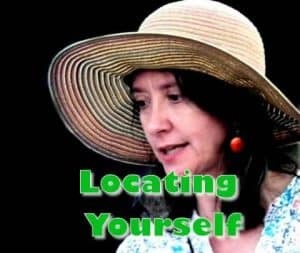
Locating Yourself — most define themselves using lists. You just might be, only, what you enact
Let’s look at the ways we categorize ourselves — and propose an alternative.
 Psst! Hey!
Psst! Hey!** Want more great writing designed to help YOU to shift your behaviour?
** Want to learn how to find, build or deepen your principal relationship?
** Want to know more about Zen principles, living and being?
When asked about Locating Yourself — asked the question “Who are you?” most people rhyme off a list.They start with where they belong, and give you their place within that universe. For example, they’ll “locate” where they fit as a member of:
a family structure: father, daughter, husband, etc., ora work environment: boss, self-employed, research scientist, etc., ora religion: Buddhist, Christian, agnostic, atheist, (not believing in god is still a belief) etc., ora political party: Liberal, NDP, Democrat, etc., ora culture: social rules, dress codes, ways of communicating, etc.See if you can come up with more.
People “locate” within their gender.Male, female, transgendered, and any and all other variations — and this, of course, comes with additional baggage, depending on cultural and religious factors.
So, the behavioural expectations of a woman in North America is different than a woman in Afghanistan.Expectations concerning a man is different in South America than in Japan.The same structural forces impact sexual orientation.Being gay in Toronto is different than being gay in Uganda, for example.Speaking of gender issues, there’s also gender excuses:“I’m snarly because of PMS” or“I’m a man, and men don’t have feelings.”People locate according to what they know. This is especially true in the West.Because of my particular “bent,” I’m pretty interested in Zen and beginner’s mind. Many of my clients come to me because of it. However, some only want to have me agree that their understanding is perfect, despite not practicing what they believe. A little knowledge is a dangerous thing.
This is something I call ego identification.
The ego has a lot invested in being declared both “right” and “enlightened.” It’s all crap, and the calm, centered part of us knows it.
We are also aware that, with the next screw up, we’ll be all over ourselves, but that doesn’t keep our egos from trying to sell this perspective.
People locate by their attractiveness, appearance, sex appeal, and who their friends are.One of my clients thought of herself as “one of the kids in University,” despite being a decade plus older.Another endlessly described how “everyone” thinks she’s “hot, sexy, and the smartest person in the room.” Hint: she wasn’t.Another identifies as a conservative Christian, but has sex with anyone who asks.It’s silly and superficial, but many “live here” because of the prevalence of such markers in the media, in advertising, and in western literature.Now, all of these ways of locating yourself (except for the last,) are valid notions of who I am.I, for example, can’t escape being a son, and now an orphan. I daily choose to be a husband. I’m retired now, and my profession was psychotherapy, and I’m also an artist. My academic background consists of a B.A. and 2 Masters degrees. I have a 1st degree black belt (as does Dar) in Ninjitsu, and am qualified to teach a Tai Chi form.
I could go on and on, listing my likes and dislikes, my backpacking trips, books written, courses taken. I could point this blog, The Pathless Path, as a compendium of what and how I think.
And were you to put all of this together, you would still only have a caricature of me.
Everyone who knows me, either through my writings, or personally, has developed a set of beliefs about me — an internal picture of me that you think is “Wayne.” It, however, is not accurate. But that’s a topic for another day.
The truth is that who I actually am is only shown in the way I choose to actLocating yourself, and your internal beliefs are one thing, and not very reliable. Knowing, for instance, that I am a son tells you nothing about how I enacted that relationship with my parents. My “son-ness” is in the action, not the description.
Example 1: Two of my favourite people are got married. Prior to that, they were in for a talk, to learn a bit more about communicating and being in relationship. I gave them a copy of The. Best. Relationship. Ever. as an engagement gift.
They talked about how they sometimes get off track in their relating, and thought it would be good to stop what wasn’t working and do what does.
The day after the session, I got 2 e‑mails:
The session was super helpful. I feel like [emphasis mine, in all cases] our relating was really clear this weekend. We even played your “microdot” game at the pub on Friday night. I’m excited to read the book.actually i didn’t feel like our relating was clear. I thought it was. i felt warm and close to [my partner], and my eyes felt wide open and my mind felt open.
i felt warm and close to [my partner], and my eyes felt wide open and my mind felt open.If you’ve read my books, the second e‑mail was a great move at correcting language according to the communication model we use. They’re doing things differently… and things are shifting.
Example 2: some years back, I was in a funk. I’d had a major depression in my past, and learned to dissipate a true depression quickly. (See my booklet, The Watcher.) This funk was a “low-grade unhappiness.” I decided to “be” with the funk, and see what lessons I could learn about myself.
That choice received a variety of responses.Darbella sat with me, and asked good questions, without trying to “fix” me or get me “out of it.” She was content to listen to me process my stuff.A doctor I know figured I needed Paxil.Some people tried to provide me with strategies to get out of the funk. They were confused when I said that I was fine being in the funk, and learning about this part of me.Clients had one of two reactions: 1) surprise that “the therapist” would be in a funk, or 2) relief that they weren’t the only ones.The last reaction is the interesting one, for me.My clients learned that something that is frowned upon by the culture could nonetheless be helpful. I heard, “You mean it’s OK to hurt sometimes? I feel low and unclear and unsure. My (partner) thinks it’s terrible and wants me to snap out of it. I’m afraid I’ll always be this way. But this is a part of me I need to explore.”
Exploration is what being aware and awake looks likeMy point, long in coming, is that the answer to “who are you” is, “it depends.”I am who I am in this moment. I am learning who I am by being open to experiencing all of me. I don’t limit my experience of me.
I work at not judging my desires and my emotions, nor do I judge how I choose to live out my life. I make clear choices and live with the consequences of my choices. I am not a helpless victim of my emotions, upbringing, culture or loci.
In this process of self-knowing, the “stuff” on the location lists — the ego stuff — the “Wayne” stuff — begins to fall away. Or at least, it has less of a pull.
Locating Myself — I am not merely what I know, who I sleep with, what I do for a living, or any of the other things that might cause me to puff up my chest or pull in my horns and scream, “Look at me! Aren’t I special!” I am who I enact. I am, in a sense, my experiences.My “I‑am-ness” is limited only as I choose to limit myself. If I identify with lists, with what others think or what others want, my “I‑am-ness” becomes a small, tight box.
I am not a noun. I am a verb. The question, then, is this: how much of my “I‑am-ing” will I bring into consciousness, and how much will I choose to live, right here, right now?
‘Cause, hey, it’s not like you’re going to get another chance, eh?
Facebook TwitterMay 24, 2021
Seven Ways to Live in This Endless Moment
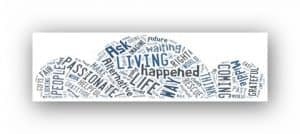
 Psst! Hey!
Psst! Hey!** Want more great writing designed to help YOU to shift your behaviour?
** Want to learn how to find, build or deepen your principal relationship?
** Want to know more about Zen principles, living and being?
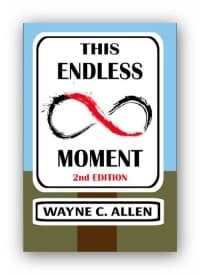
Note: If you want to learn more about this topic, and want to look at it from a Western perspective, have a look at my book, This Endless Moment.
Living in This Endless Moment means finding balance, clarity and a sense of purpose and direction. Some hints!
1. Now is all there isIf I had to condense down all of the client issues I dealt with in my 32-year-long counselling career, I would say it comes down to this: living in the past or the future is deadly.
It is easy to latch on to some tragedy from the past or pine for some glimmer of hope in the future, and thereby to waste one’s life. Yet, the pull to look inside is strong.
Inside? Of course. No matter how much you believe your version of your past story, no matter how you imagine your future will be, it’s all a fantasy.
Nothing you think happened,happened the way you think.
And nothing you imagine,
is going to work out
as you imagine.
The key to these seven ideas about living in this endless moment is how they relate to the seventh one.
The Middle Way is the Buddha’s discovery. he found it in his body as he sought enlightenment. He discovered that it lies between
austerity (starving and abusing himself) and excess (a life of luxurious, conspicuous consumption.)The Middle Way is not a replacement for the other two, but rather an acceptance of all of it, by choosing the equanimity of the Middle.
It is so that we will endlessly reflect upon our imagined past and imagined future. It is non-helpful to try to stop, and also non-helpful to give yourself grief for doing it.
Alternative: Embrace the Here and NowRemind yourself that past and future is illusion. Neither direction is helpful, and mostly keeps us stuck in what is not working. Hold your stories lightly, without judgement, and bring yourself back to this moment.
Ask: What can I do right now that will strengthen and broaden my experience of myself?
2. Life isn’t fairShift (and shit…) happens. If you think life is supposed to be fair, you are in for a rocky ride.
Life is, and all kinds of stuff happens. Birth, living, death—and much of it out of our control.
I can guarantee you will experience the death of others, including people you love. You will experience betrayal, often by people you love. You will be abandoned, often by people you love.
You will be unjustly blamed, judged, punished. And then, you will die.
I know. You think you “should” be special, and that stuff like this “shouldn’t” happen—and especially to you. After all, what did you do to deserve this? (I heard that exact line, often, from clients…)
Many people waste their lives trying to get others to treat them ‘right.’ Somehow,a) it never happens, and
b) they meet, again and again,
people who do not treat them right.
Maybe they are looking for the wrong thing.
Alternative: Life Just ISWhat’s going on out there is, for the most part, out of our control. Declaring, “It’s not fair that the world isn’t fair!” doesn’t make the world fair. You’re here to be you, discover you, and to live out your path of purpose. Part of that walk is to deal efficiently, elegantly, and firmly with whatever the world throws at you.
Ask: What can I do right now to let go of my judgements and do what I need to do, for me?
3. No one is comingThis line was on a framed sign on my supervisor’s wall.
Another ridiculous belief is that rescue is coming—either in the form of a celestial cowboy coming to end the world and take you off to live in the clouds, or in the earthly version of rescue from the man or woman who will ‘complete you.’
Hollywood loves rescue fantasies.The good guy saves the damsel in distress,
and vanquishes the baddies.
Nice. Not valid, but prevalent.
In this endless moment… “No one is coming.” No one is going to make it all better for you. No one is going to cover the puddles of your life with their cloak.
Many of you will have been wasting your life trying to be ‘nice to others’ so they’ll be nice to you. Same idea. Sacrifice your life for another, and they’ll do the same for you. Ever notice that it doesn’t work, you’re miserable, feeling put upon, and no one has come to rescue you?
Back to # 2 – life isn’t fair. It’s not a zero sum game. Waiting for rescue or giving your life away in hopes that someone will do the same for you is a mook’s game.
Alternative: Rescue Yourself, from YourselfMake rescuing yourself your top priority. The only person who can end the games you are stuck in is you. Let go of waiting, wasting your life, doing your life as others demand. Be yourself.
Ask: Is how I am acting and viewing my life, right now, helping or hindering my understanding and my performance? Who (or what) am I waiting for?
Then: let it go and move on.
4. Be gratefulMost gratitude is conditional. As in, I’ll be grateful to you after you’ve done something for me. You go first.
My mother-in-law has a needlepoint in her bathroom.It’s of a bear looking into the mirror.
Text: “Smile!”
“You go first.”
My nature is to be somewhat morose (god, I love that word…) and I notice that all I have to do is look at Darbella and I’m suffused in gratitude. Because we accept each other as we are, not attempting to fix each other, but simply being with each other, gratitude is what is left when the drama goes.
It’s easy to be grateful for stuff we judge to be good. Harder, much harder, to simply be grateful for (as Zorba says) the whole catastrophe. How can you be grateful for death, tragedy, sadness, betrayal?
Well, it’s one of those Middle Way answers. If you bitch, moan and complain about it all, what changes?
Gratitude is not condoning the evil that happens. Rather, I am grateful for having survived yet another lesson. In a sense, I am grateful for having (so far) survived and learned.
Easy? NO! Essential? YES!
Alternative: Adopt an “attitude of gratitude”(Robert Schuller.)You are who you are because of the life you have lived. If you want something different, do something different. But let go of harbouring anger and resentment. Not because whatever happened wasn’t difficult, but because whatever happened was what happened, and is thus ‘the stuff you’re made of.’
Ask: what in my life (body, mind, spirit, history) am I refusing to accept and ‘bless?’ How is this helping me?
5. Give it awayI like this attitude—giving as a way of being of service. This Endless Moment is a life-choice that benefits both “self” and others. It’s Karmic, in the best sense of that idea—what goes around comes around.
Your job is to give yourself away!We all need to make a living. But most people tend to wait and wait to find the perfect moment to be themselves. They withhold their passion, their talents, their gifts, waiting to be “appreciated.” Or, they get into the “I’m not doing this if I don’t get paid” mentality.
Remember the Middle Way. This not a paean to ‘free.’ It’s a suggestion, like all of these, to make yourself—your skills, knowledge, gifts—available to those around you.My mom, lovely woman that she was, was
a good cook, and a lay minister.I mention those two things together because,
when asked for a recipe, she’d agree, then leave out ingredients, so the person making the recipe would end up with something ‘not quite as good.’ in all her years in the ministry, she only she wrote 10 sermons, which she trotted out when asked to preach. People would ask her for a copy, and she’d refuse.Now, here’s the punch-line. After she died, we cleaned out her ‘stuff.’ None of her ‘special’ recipes were written down. And she had a little lock box in her closet. In it were her 10 sermons, which we threw out, not knowing what else to do with them. Thus, nothing survived her.
Alternative: Your mission is to put yourself out thereDo this so that some gift of yours remains after you die. If someone asks for help, an opinion, whatever, give freely.
DO NOT give (advice, opinions, etc.) if others do not ask, (that’s just rude.)
Ask: What am I doing, right now, to make a difference, as I share my gifts?
6. Be passionatePassion is all about being engaged. Immersed. Overcome. To do so, you have to let down your guardedness, and tear into life and living, with verve and pleasure.
Many, many choose to disengage based on fearing, “What will people think?” They are strongly pulled to passionate, full living, and back off because of the pressure to conform.Now, of course, there is a price to pay for being passionate, and it is exactly the consequences of living passionately that lead so many to repress themselves.
Alternative: Throw Yourself into LifeWhat is it, exactly that you are waiting for? You only get one time through, and to sit on your hands while dressing in gray sackcloth is not what you or the world needs. Without waiting for permission, be yourself, and throw caution to the wind. Put yourself out there, with full understanding of the consequences.
Ask: What do I bring to the table that is uniquely mine, that is my gift to the world? How can I passionately engage with life, with others and with myself?
7. Live the Middle Way of This Endless MomentOf course, this is all about living the Middle Way. This path is about recognizing the fallacy of black and white, rules based living and thinking. Most lives stall on the “What is the right way to live?” question. They stall because all that ever happens is an internal rehashing of the same old thoughts, dreams, fears.
Alternative: Just Do It!Walk. Do. Act. Be. Learn. Inspire. Create. Be passionate. Be alive. Be juicy. All without attachment to results, opinions, pressure to conform.
Ask: What is my next step, and how can I walk it with passion, verve, and purpose?
Facebook TwitterMay 14, 2021
10 Zen Principles to Help You Live Life Better

Zen principles are little bits of simple guidance, designed to help you grasp this life direction. This article is greatly expanded upon in my book, Half Asleep in the Buddha Hall.
 Psst! Hey!
Psst! Hey!** Want more great writing designed to help YOU to shift your behaviour?
** Want to learn how to find, build or deepen your principal relationship?
** Want to know more about Zen principles, living and being?
Life According to Zen Master Yogi Berra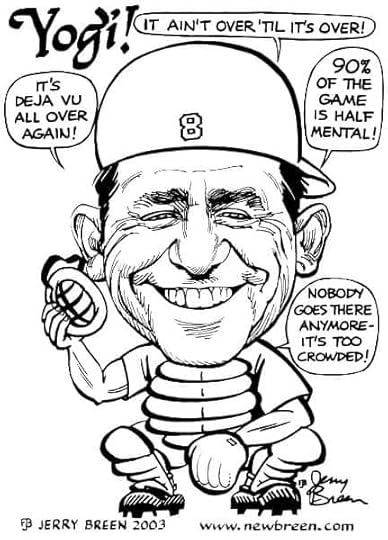
The following Zen principles are from one of the most Zen guys
ever–Yogi Berra
Most do not get this, and give up way too early. You’re not done until you die-or give up.
This quote is from 1973. Berra was managing, and his New York Mets trailed the Chicago Cubs by 9½ games in the National League East. Berra realized that no matter how hopeless a situation seemed, the season did not end until the last out. The Mets rallied to win the division title on the next-to-last day of the season.
To be down seven runs with one out to go is no more significant than any other point in the game. Your duty is to act-in this case, to ‘play ball devotedly.’ The outcome is whatever it is. However, if you don’t swing the bat with the intention of winning, you doom yourself. So, you set an intention (in this case, to win) and you work toward it with full effort, until the very last.
Most give up a moment or so too soon-typically when the going gets tough, and the fog rolls in. Here’s a story:…
[The rest of the story is in my book, Half Asleep in the Buddha Hall]
Often, decisions to “stop,” to “pull up,” are made in a similar fog, just a few feet from success. Far better to continue walking, and to make course corrections as we go.Zen considers only the present moment. What I choose to do in this moment is not pre-determined by anything. Blaming your mommy or your past relationships, your genetics or your lack of understanding is just an excuse for not swinging for the fence, right now.
Remember: the journey of a thousand miles begins with the first step, but only if you take it. And, of course, each step is a first step.
9. “You can observe a lot just by watching.”This might seem nonsensical until you see the underlying rhythm:
You can observe a lot by “just watching,”as opposed to judging.

Observing is something we have talked about at length. To observe is to detach from interpretation. When you ‘just observe—just watch,’ everything means nothing, and nothing is permanent. On the other hand, if I see something and immediately go into my head, and start making distinctions, all I will do is find evidence for what I already believe.
Shifting to simply observing requires that I uncritically watch the situation as it unfolds before me. As my mind struggles to create a drama to judge, I observe my mind playing games, and then have a breath and let go of that game. In this clarity, I can choose a way to respond that is appropriate to the current moment and situation, without getting tied up in the games and dramas my mind loves.
[The rest of the story is in my book about Zen principles, Half Asleep in the Buddha Hall]
The centered life (“observing by just watching…”) is about acting in a way that is consistent with your most deeply held understandings. You cannot be peaceful by yelling… you cannot solve complications by creating chaos. The job of life is to become consistent, persistent, and resistant.
Remember: in every area where you think you are stuck, you are stuck because you are holding on to something that does not work. Let go, observe, move on.
8. “Think? How the hell are you gonna think and hit at the same time?”This is the follow-on to the last point. From a practical perspective, Berra was spot on. When a pitcher throws a baseball at 95 miles per hour, it takes the ball only four-tenths of a second to reach home plate. That gives the batter about two-tenths of a second to decide to swing or not to swing.
Thus, when hitting a baseball, thinking gets in the way of acting.This is true with learning most things. As we learn something, we move from complex and slow to easy and fast. (Think back, for example, to how hard riding a bicycle was, until it wasn’t.)
I’m not saying that hitting a 95 mile an hour fastball is easy. I am saying that if you are going to learn this skill, you had better give up thinking you can reason your way through it. All you can do is swing a bat, again and again. Once your body ‘gets’ the idea, you can then practice elegant hitting, until it becomes instinctual.
In Zen, we speak of discipline. The key discipline is ‘non-following,’ or non-attachment. You let each non-helpful thought go by not clinging to it. Now, of course, as with Beth, such thoughts will arise until you die.
Following such thoughts leads to paralysis by analysis. This paralysis seems inevitable, until I notice that repeating dysfunctional thought patterns causes the paralysis. I am ‘lost in thought,’ and the cure is to stop myself—not by more thinking, but by acting. Less thought, more action.
Remember: you cause yourself problems by over-thinking and under-doing. Pick a way to be, and then just be it. Swing for the fences, letting the critical thoughts fade into background noise.
7. “If you don’t know where you are going, you will wind up somewhere else.”I used to have a poster on my counselling wall that read,
“If you aim at nothing, you will hit it.”Berra presents the same idea.

Many are the clients who whine about their lives, their relationships, etc. I say, “Well, what do you want?” They reply, “Here’s what I don’t want…” Phooey. Stating what you do not want, or where you are not going, or who you are not is futile and lazy. Oddly, most see this as progress.
“I never want to be in a relationship like this again!” OK, so the next one is worse. You got what you asked for. This happens all the time.
If you think about it, defining what you do not want is impossible, as you cannot cover everything.
[The rest of the story is in my book, Half Asleep in the Buddha Hall]
There is nothing more important than identifying the territory (what I want) and procuring a map (how to behave so as to get there.) It is like using a foreign subway system. If you have a destination, all you have to figure out is the map, how to get to the right platform, and which car to enter. If you have no destination, you are going to end up ‘wherever.’
Sure, life is hard. There are the bad breaks we create, and bad breaks that just happen. So what? The only way to really live is to focus on what you want, as you drop your attachment to what you don’t want. Then, start. Sounds easy, but it takes discipline. Is it worth it? “Yes!”
Remember: your job is to state, clearly, who you are, what you are about, and where you are. From “here,” you choose your next action. Next, see to it that you have integrity. Integrity means that your actions match what your mouth is saying. Wandering around all confused and lost, while griping about how hard you are working at defining what and where you aren’t, is the height of dumb.
6. “You better cut the pizza in four pieces because I’m not hungry enough to eat six.”I think we laugh at this one because we recognize we have done this a time or two. We know we shouldn’t eat two pieces of pie, so we take a larger first slice. And then tell ourselves, “At least I didn’t eat two.”
What we are talking about here is the tendency to justify doing something that violates our principles, then resorting to the “It’s not as bad as it appears” defense.
“I’m not going to criticize my partner, as it doesn’t work. Except this time, because what he did was really bad.”“I’m done cruising bars and picking up women. I met her at a library, so that’s different.”“Sure, he’s abused me in the past, but this time he really means it when he says he’s changed.”“I’m going to live my life and not let my partner tell me what to do, just as soon as he agrees.”Your life changes when you decide to be disciplined about what you allow yourself to enact. This process starts when you watch your behavioural outcomes, and notice your patterns.
[The rest of the story is in my book, Half Asleep in the Buddha Hall]
For this young woman, change will come when she drops the excuses for having sex in an attempt to buy love. She must develop and then live by her principles, with no excuses. She must take total responsibility for her outcomes. Otherwise, she is doomed to repeat the same horizontal behaviours, get the same results, and never change her level of self-esteem.
Remember: our minds are clever little things, and endlessly justify why we cannot do what we say we are going to do. The last thing our egos want is integrity-based living — it’s entirely too self-responsible.
It is very Zen to do what we say we will do. Nothing less, nothing more. Chop wood, carry water. Don’t be tricky, don’t dissemble, and don’t lie. Say it. Do it. Four pieces, six pieces — it’s still the whole pie.
5. “It was impossible to get a conversation going; everybody was talking too much.”A conversation requires undivided attention, depth, and a willingness to be open and vulnerable. Most people talk to hear their own voices, and to fill fearful silence with sound. Berra is right—when people talk too much, it is impossible to converse with them.

Talking (small talk, emphasis on small) is the socially acceptable way to fill the silence void. We’re conditioned to spew small talk, which has nothing to do with actual conversation.
Conversation requires the willingness to listen carefully, while suspending judgement. If we do not pay attention, we are nothing more than the sum of our pre-judgements—our prejudices.
Actual conversation is a verbal dance, as both parties make a serious attempt to communicate, “This is who and where I am right now.” Conversation is sharing who I am through self-reflection, and listening to what the other person has learned of themselves through their self-reflection.
Many people confuse self-reflection with an endless whine about how tough their life is.[The rest of the story is in my book, Half Asleep in the Buddha Hall]
Even when you listen carefully, your ego-based prejudices have a way of confusing you. Listen again, with a clear heart and mind, and you might hear something different.
Remember: slow down. Speak your truth, from as deep inside as you can reach. Reveal more and more of you, including the messy, evil, nasty parts. Then, shut up, watch and observe. As you find yourself planning a response to what another is saying (in other words, you have stopped listening,) shut up and open your ears. A conversation is never a debate, and there is no winner.
4. “Slump? I ain’t in no slump. I just ain’t hitting.”We are nothing more than our self-definition. Or, as the Buddha said,
“All that you are is what you have thought.”We endlessly self-describe, and because we think it, we tend to stop there, believing we are as we think ourselves to be. Therefore, to change is, first, to change your self-description.
[The rest of the story in my book, Half Asleep in the Buddha Hall]
Our lives are the proving ground for our beliefs. Where I am in life— right now—is a perfect mirror of who I am, what I believe, and especially what I do. I can look at my surroundings and at my mental, emotional, and physical state and tell precisely what I believe, and who I am.
We need to explore the rules we operate under. If we don’t look at what we believe, to see if what we believe makes sense for us now, we are doomed to live out some old version of our life plan, and be totally miserable in the process.
Remember: “a slump” is a judgement, and makes the thing perceived seem to be something outside of your control. If you put the way you are presently into a box labeled “Out of my control,” you are well and truly screwed. Instead, empty that box. A simple statement of, “Here is where I am right now” allows for the next clause, “…and here is what I will do differently.”
Berra’s “I just ain’t hitting” is actually his way of saying, “I am not hitting right now, and will hit next time I’m up to bat.”
You think it, you are it.
3. “If you come to a fork in the road, take it.”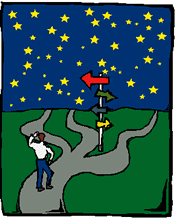
This is opposed to just standing there, staring at the fork, refusing to choose, to move, to decide. Or, you’re going down a road that’s not getting you where you want to go. You come to a place for changing directions, yet continue down the old path. You say, “I may not be getting what I want, but at least this path is familiar.”
Others are stuck in deep inertia, refusing to shift anything, including the painful stuff, until they can be assured that they’ll get to the ‘right’ destination.
Just standing at a crossroads, endlessly debating the ‘right path,’ is a mook’s game. [A Mook’s Game is a game for suckers—like 3 Card Monte]
Unfortunately, our world is filled with people doing just that—doing nothing, while bragging about how much effort they are putting into their internal debate.
As they stand there. Doing nothing.
Not to decide is to decide. What happens in our life is about what we notice or give credence to. Something different happens in our lives when we choose to shift our understanding, and then our actions. This way, or that way—no difference, no waiting to identify the ‘right path’—just take the fork in the road.
[The rest of the story is in my book, Half Asleep in the Buddha Hall]
Remember: life presents endless forks in the road. In general, any choice we make can be changed at any time. (Life and death choices occur rarely.) Turning a garden variety choice into life and death (“But… but… what if I make the wrong choice???”) is actually a way to stay stuck. Pick one, and start walking. You do not get the time you waste back at the end of your life.
2. “I never blame myself when I’m not hitting. I just blame the bat, and if it keeps up, I change bats. After all, if I know it isn’t my fault that I’m not hitting, how can I get mad at myself?”Regret, blaming yourself, getting mad at yourself… a trio of stupidity. What Berra is describing in this quote is so Zen—“This is not working, so let me try this.” His “blaming the bat” strategy is perfect. Blaming the bat is “no-blame,” or non-attachment-to-blame. Berra’s bat was a totem —a symbol—and he used it to re-focus his attention.
Here’s an illustration: say your kid misbehaves, and you decide to yell at her. The kid flinches, cries, and runs and hides. And later repeats the mis-behaviour.
The wise soul “does not get mad at herself.” She looks at the bat she chose—her choice to yell. She “blames the bat,” and picks up another bat—she apologises to her daughter and talks the issue through. Remember: blaming the bat is no-blame!
Non-attachment starts with acceptance that everything is as it is, until it isn’t. When things go ‘ass-over-teakettle,’ it’s essential not to get into blaming or recriminations, as all this does is freeze you in place, without ‘things’ changing.
Being in crisis is the perfect time for a little mantra:
“This is not about me, this is not personal.”
[The rest of the story is in my book, Half Asleep in the Buddha Hall]
In reality, nothing is happening to us.All one can do, as Berra states, is drop the judgements while doing something new. Blaming yourself accomplishes nothing. Shifting focus helps us to remember that life is endlessly moving on, and we are stepping into it, moment by moment. Nothing ever remains the same.
Remember: when seemingly lost, open your eyes and see the beauty around you, then ski in a logical direction, gracefully and smoothly. Breathe. Watch life continue to unfold. Act, have faith, and detach. You will get home, one way or another. Panic and giving up, although popular, gets you nowhere.
If what you are doing is not working, change bats — no blame, no recrimination. Move. Now.
1. If I didn’t wake up, I’d still be sleeping.Here’s my favourite image. I think it’s by John Daido Loori.
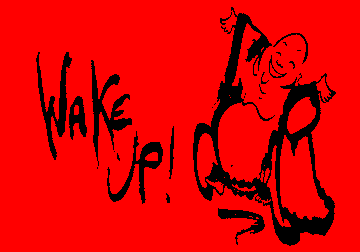
If you are not awake, you are asleep. Period.
Being asleep is the norm in our world. People are caught in dreamscape living, making what little they observe fit their preconceived notions, categorizing people and experiences according to their prejudices.
Being awake is simply being. It starts with a conscious suspension of judgement, through the discipline of directing one’s attention. Judgements fade and what is left is awakened living.
Here is a description of being asleep: as you react out of habit, fear, or confusion, you are drifting off into dreamland.
As I wrote in This Endless Moment:
One point of [the movie] Waking Life is captured in the title: one can choose to wake up to life. Or one can live forever trapped in a dreamscape, living a “life” of “woulda, coulda, shoulda.” In a hundred years, no one will remember your name. No one, ever, will know you. Except, possibly, you. If you choose.
And the only you that you can know is the you that you are in this moment. You are not your past—all you have is a present explanation of the story you tell yourself about what you believe happened to you.
In other words, you experience your past now and only now.
You are nothing more than this moment, this breath. In this moment, you can be fully alive and fully present. And in that choice, you are whole, complete, and without blemish.
Authentic, enlightened humanity exists only in the Eternal Now.
Wake up!
[The rest of the story is in my book, Half Asleep in the Buddha Hall]
Life is about ‘waking up’—about getting on with what needs doing. There are a million and one reasons for not starting, for turning back, for staying put, for being ‘safe.’ At the end of the day, however, nothing will have changed. Far better to risk, to dare, to climb.
Far, far better to ‘wake up’!
If you liked this article, here’s another Zen principles article, this one on Zen Living!
Facebook TwitterApril 26, 2021
Being a Mirror
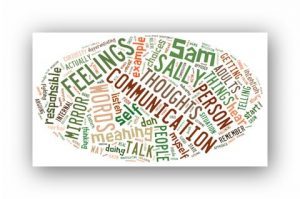
Being a Mirror is all about helping others to hear themselves by reflecting back, without judgement.
 Psst! Hey!
Psst! Hey!** Want more great writing designed to help YOU to shift your behaviour?
** Want to learn how to find, build or deepen your principal relationship?
** Want to know more about Zen living and being?
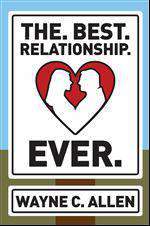
Note: And if your present relationship needs work, well… check out The. Best. Relationship. Ever. It’s my relationships book… you’ll find all the help you need!
I suspect that the reason that most couples have problems with communication is that they have grown up witnessing poor communication.
So let me define a few things that good communication is not.
Good communication is not:getting another person to agree with you.teaching, explaining, or lecturing.manipulating another person into doing things your way.bargaining, cajoling, or begging.Good communication is:clearly differentiating between thoughts and feelings.being self responsible.being willing to honestly state what you know about your thoughts and feelings.Most people grow up hearing the adults around them speaking from a place of self-righteousness. They hear about wounded feelings, and learned (erroneously) that other people or external situations are responsible for what each adult is feeling.
And speaking of feelings, most adults have real trouble grasping the difference between a feeling and a thought. So let’s start there.
Feelings Are Just ThatHere’s a 100% rule for you:
Everything that is going on inside of you is about you, or better put, is “caused” by you.
The Buddhist concept of emptiness speaks to this. We’ve talked about this a lot, but when we say “empty,” we mean “empty of meaning.”
So, using the illustration of speech, what someone says to you is nothing more than sound. What you do with that sound is 100% up to you.
It’s not that I don’t believe people can say something that they intend to be hurtful. It’s that, and here’s the hard part, the intention of the other person has nothing to do with what I do with his or her action.
Adults have complete freedom to, for example, walk out, as opposed to simply blaming the other person.
Once we become adults, we always have a choice about who we hang around with.
If the person we’re with starts using ‘his’ words in an intentionally hurtful way, I can choose not to hurt myself over them, while at the same time stating that we either do therapy or I will leave.
Instead, what typically happens is the person on the receiving end metaphorically “picks up the knife and stabs herself,” demands that the perpetrator stop, and goes immediately to, “This isn’t fair! He shouldn’t be treating me like this!”
This victim-based approach changes precisely nothing.
Three thingsIn any situation, there are actually only three choices.
The first is to continue, the second is to leave, and the third is to whine.Under “continue,” there are two sub choices.
One is to accept things as they are, and the second is to head into therapy, or something similar, to shift the situation.I find it odd that most people choose the third option.So, to go back to the 100% rule, words are words, no matter what mommy told you. Here’s how it actually works.

Let’s imagine that Sally says to Sam, “You never listen to me!”
Now, let’s remember that Sally’s intention is immaterial to Sam’s response. In other words, despite Sally’s intention, the words only mean what Sam makes of them.
There’s really no way to determine whether feelings or thoughts come first. But what happens is this:
the electrical signals that are Sally’s words reach Sam’s brain. At that instant, Sam’s brain simultaneously interprets the words, (decides who “you” is, remembers what “never” means, etc.) and then ascribes meaning, while also, perhaps, attaching a feeling.All of that is Sam’s doing, and has everything to do with who Sam is, how he was brought up, and what his level of self-awareness is.
If Sam is normal, (meaning broken, and inept at communication…) Sam is going to react instead of responding.
For example, he might flatly deny what he assumes is an accusation. “Of course I listen to you, you never shut up!” Or, Sam might specifically challenge the word “never.” “I spent an hour listening to you this morning.” Or, he might go on the offensive. “What you mean I don’t listen? You never listen to me! And besides, we haven’t had sex in a week!”And then, depending on the feeling he creates, he might sulk, walk away, start yelling, etc.
Internal Choices and Being a MirrorA self responsible person, on the other hand, would do two things.
First, he would indicate what choices he is making internally.
Second, he would express curiosity.
Here’s where we begin to differentiate between feelings and thoughts. According to the communication model that we follow (the Haven Model), all feelings are felt in the body. (Thus, “I feel you don’t understand me” is NOT a feeling.)
For example, we can feel warm toward someone or cold toward someone. We can feel close to someone, or distant from them. We can be attracted, or repulsed. We can feel open, or closed.
Sam might say, “As I hear you say that, I feel cold and distant from you.”Now, notice that Sam did not say, “You made me…” He uses his language to own his feelings.
There is a very practical reason for doing this. If Sam were to say, “You are making me sad,” Sam would be declaring himself to be a victim, and it’s quite possible that the conversation will get derailed — either Sam and Sally end up talking about Sam’s sadness, or they end up arguing about whether making Sam sad was Sally’s intent.
In either case, Sally’s (poorly expressed) issue gets trumped by Sam’s.
Sam might then shift to what he is thinking.Rather, the self responsible person uses “I” language to describe their internal, self-created “feeling-state.”
“Here’s who I am, and here’s what’s up for me.”
Darbella and I love to use the following clause — “So, the story I’m telling myself is…” You could substitute “judgment,” or “interpretation” for “the story I’m telling myself.”
Sam: “So, the story I’m telling myself is that you’re trying to pick a fight—and I am making myself anxious, and judging that you no longer love me.”
Now, while the language is a bit kludgy, this is actually a description of what’s going on inside of Sam, and it’s devoid of any blame directed at Sally.
Curiosity and Being a Mirror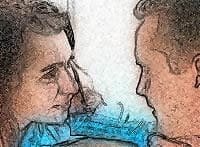
If Sally is wise, she hears what Sam is saying — that he’s describing his internal experience and in no way is he blaming her. So Sally can have a breath, as opposed to getting all defensive. In other words, at most, Sally might say, “Tell me more.”
If Sam is wise, having expressed what’s up for him, he might remember where the conversation started. Sally was raising an issue about thinking that she was unheard. (Remember, you can’t “feel” unheard — it’s a thought, not a feeling.)
Sam might say, “I’m curious about what you think I’m not hearing.” This is an open invitation for Sally to share more information, while also noticing her own thoughts.
This is Sam, being a mirror for Sally.The curiosity question is a very clear mirror — “Here is what I heard — please tell me more.” And it’s called a mirroring question because it acts like a mirror. The reflection in a standard mirror is neither more, nor less, than the object reflected.
Now, as some of you are going to want to argue that real people don’t talk like this — that fighting and arguing and name-calling are the basis of relating.
All I can say is, “How’s that working for you?”
The only thing the “normal approach” gets you is more of the same — resentment, more fights, the silent treatment, anger, drama.
If that’s what you want, by all means keep doing it. Or, you could grow up, and get over yourself.April 11, 2021
Relating–It’s Not What you Think
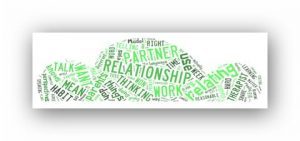
Synopsis: Relating is a task that moves in one direction — from you to your partner. It is meant to be an exercise in self-awareness.
 Relating DifferentlyFirst of all, most of what I’m going to suggest has a “language component” to it.
Relating DifferentlyFirst of all, most of what I’m going to suggest has a “language component” to it. IMHO, one of the few things that Freud was right about was what are called Freudian Slips. That’s when words pop out of your mouth that say what you really are thinking. We all do this, sometimes out of habit.
But speaking of habits, if you refuse to correct yourself when you misspeak yourself, you actually make it almost impossible to shift the habit.
And relating poorly, believe me, is nothing more than a bad habit. And language is that powerful.
 Can I get an amen for my bad relationship?Let’s, then, start with your relationship.
Can I get an amen for my bad relationship?Let’s, then, start with your relationship.You don’t have one. None of you do. Me either.
What I mean is this: no matter how hard you try, you can’t take a relationship into a counselling office (or anywhere else for that matter.)
What you can take in the room is you and your partner.But then, what we have is a therapist, you, and your partner. Still no relationship.
The therapist says, “I’d like each of you to tell me what brings you here.”
As you and your partner speak (or cut each other off, or finger-point, or sigh and roll your eyes dramatically…), you begin to relate.
The therapist cannot see a relationship, but (s)he can see how you relate with each other.
Talking about “the relationship” is a way to avoid talking about what is importantOn the other hand, if you say, “Here is my perspective on how I relate with my partner, and my take on what isn’t working for me,” there’s hope.
The problem with nouns like relationship, husband, wife, family, etc. is that we toss them out there as if they mean something.
“Everyone knows that a good [fill in the blank] is [fill in the blank], and that’s not what we have, so…” Except that there are as many definitions of, say, relationship, as there are people.
And “everyone knows” means, “everyone would agree with me that my partner is wrong.”
Second, the only thing you can ever talk about is yourselfThe key word, when communicating, is “I.” And yet, it tends to be the least used word. As we said last week, the norm is to use “you,” and to blame.
You can read about the Communication Model in a couple of my books, but key to it is the use of “I.” The only authentic use of “you” is when I describe what I sense, as in, “Your eyes are squinty, and you are looking down.” Or, “Your voice seems loud.” That sensory data is pretty hard to dispute, assuming you are stating what you see/hear.
From that point on in the dialogue, all you can talk about is what you are doing with the data. “Your eyes are squinty, and you are looking down, and I interpret that to mean that you are mad at me.”
That is worlds away from, “You are mad at me,” or “You always get mad at me.” The bottom line of great relating is giving up thinking you know anything for sure about your partner–all you know is the story you are telling yourself.
So, again and again, you state your guess, and ask your partner what’s up.
Third, if you think your job is to fix or change your partner, please go get a divorceYour job is to work on yourself, and to share your perspectives with your partner, and vice versa. I mean, really, who appointed you the “fixer” of another?
 Let me try pouting with a megaphone
Let me try pouting with a megaphoneShe: I just want him to go with me to see my parents.
He: I’ve made plans for the weekend, so not this time.
She: Stop being unreasonable… and besides, you never want to do what I want to do…
He: I went to your parents’ place 2 weeks back, and I’ve made plans for this weekend, so not this time.
She: (sniffle, sob — to me) See! He’s never going to change!
I finally stopped things, and said to her, “So, first, are you saying that you want him to do what you want him to, every time?”
She: Yes! That’s what marriage is all about! Doing what your partner wants!
Me: And just for my information, do you go to visit his parents regularly?
She: (Aghast) Of course not! His parents are idiots, and they don’t like me, so I never go.
Me: Do you see a contradiction?
She: )(puzzled… then) No! My request is reasonable, and besides I have the right not to see his parents.
And on… and on…
And no, she never saw what was happening, because she had firmly convinced herself that he was the problem, and she was the solution.
Fourth, you need to be committedActually, I wish she could have been, but I digress.
We suggest 30 minutes a day for communicating, using the Model. Minimum. And then, out come the excuses. No time, (s)he won’t, it won’t work.
And candidly, I agree. It won’t work if you don’t do it, and it won’t work if you refuse to give up blaming and fixing.
So, what’s left? Well, someone to share with, cry with, work things through with. But only possible if I get over myself and use the 30 minutes as an opportunity to work on myself.
Because that’s what relating is for.
I’m privileged to have Dar as a witness to my life and my learnings, and I’m privileged to witness her. Not once in 33 years have we tried to fix the other, ’cause, hey! We’re not broken! We listen, we offer perspectives and suggestions if asked (that part is still hard for me, as I want to jump right in there with my insights. Dar is good at telling me to back off.)
Read The. Best. Relationship. Ever., or go find a therapist who can teach you a Communication Model. Learn to work on yourself, and to share what you are learning, and who you are, with your nearest and dearest.
You don’t have to do this alone, but you do have to commit to doing it.
March 14, 2021
Things Change When You Do
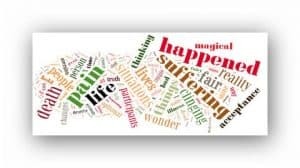
Things Change When You Do — this is about is how we deal with events that seem larger than life.
Typically, these events are categorized as “This is not fair!”Gathered under this umbrella are things like death, illness, accidents, global catastrophes, abuse, and the like.
Darbella and I once led a seminar. One of the participants was dealing with a serious illness, and was in pain much of the time. I did a few Bodywork techniques with her, to help her manage her pain so she could stay present in the group.

During one of the dialog sessions, two of the other participants started bemoaning the woman’s situation, talking about how unfair it was, how awful her situation was, how isolating pain was, and on an on ad nauseam.
As all of this wound down, I couldn’t help but wonder why people waste time and energy on “It’s not fair!” From my vantage point, the participant was mostly present, was coping with her pain, and interestingly never agreed with either of her interlocutors.
I tend to be a simple Zen person.
I saw the participant as she was, and accepted her as she was. When her pain got to a certain point and she asked me to help with it, I did some Bodywork. There is nothing else I can do.
Because “the way it is, is the way it is.”And fairness has nothing to do with it.
When we are kids, we hear fairy tales about people living “happily ever after.” We are told that if you are good, the fairy godmother comes and gives you stuff. We believe in Santa and the Easter Bunny. Then, we grow up and give up on Santa, fairies, and the bunny, but neglect to let go of “magical thinking.”
Magical thinking makes the following link: “If I am good, only good things will happen to me. For free. All the time.”
The other side of the coin is the idea that if “bad stuff” happens to someone, they must have “deserved it.” Implicit in this kind of thinking is the idea that bad things only (or should only) happen to bad people.
If you hang around wakes or funeral parlors, and if the dead person died of anything other than of old age, you will hear some moron ask, “I wonder why God was mad at him. I wonder what he did to deserve this?”
Being a practical, Zen person, I wonder, “Why not this person?”After all, Gandhi-ji was assassinated, as were Martin Luther King, Jack and Bobby Kennedy, and a myriad of others. Did they “deserve it?” Of course not. Should they somehow have been exempt, given their lives of service? Of course not.
Did the woman in my first story receive “fair” treatment? There is no such thing. There is just the truth of her life — this happened and this happened and this happened.
The reality of our lives is that we live in the midst of pain, suffering, and death. No being ever alive has escaped this. Most of us will outlive our parents. Some of us will outlive our children.
There will be illnesses, accidents, pain. Wondering about “why” is simply an attempt to avoid confronting the reality of our impending death.
There is no why. When a tragedy happens, why do some live and some die? Were the survivors better people, or were they lucky?
It is clearly the latter. The equation is simple: they got out, others didn’t.That’s not fair!Well, yikes. Says who, and on what basis? Magical thinking spins the whole thing back to, “It just shouldn’t have happened!” OK. But it did happen, so what’s the sense of putting energy into that thought?
Then, people go a step further and start, “The government is to blame! They should have stopped it from happening!” And what changes? Nothing! It still happened.
What’s really going on here is that no one likes to see people they care about in pain, sick, dying, dead. That stuff is not supposed to happen, and if it does, “god” is supposed to make it happen to someone else. Ad the wailing and gnashing of teeth is directly connected to “The magic has failed!”
The only cure for all of this is the total acceptance of what is. From a place of acceptance, I can then choose to act differently, instead of just whining about unfairness.
Pain, for example, is one reality that touches all of our lives. For many, the pain will be physical. For all of us, there will be the emotional pain of grief and loss. Pain is not optional.
Suffering, however, is optional.
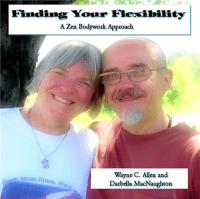
Check out our program Finding Your Flexibility. Learn to deal with pain using tools such as Qi Gong, meditation and Yoga.
All suffering is self-imposed. The Buddha’s first truth is, “Life is suffering.” But his second truth is, “All suffering is caused by clinging and aversion.”
Clinging, in our above examples, is clinging to magical thinking. Aversion is, in the pain example, the unwillingness to embrace (accept) the reality of the pain. The irony is that such aversion, and clinging, and denial is crazy making, mentally painful, and changes absolutely nothing.
Suffering comes from clinging to the past — wanting everything to be the way it was before the “bad” thing happened. (Are you seeing Disney movies running in your head?) This, of course, will not and cannot ever happen, no matter how much you wish it were so.
And so, you suffer.
Suffering comes from hating and resisting pain. Yet, the pain is real — is part of one’s reality.
Ram Dass once said (I’m paraphrasing),
“Life requires having a hot stone placed in your hand. You have two options. Grasp the stone and burn your whole hand, or hold the stone lightly and only burn the part under the stone. Choose.”
Most choose hardening and tightening around the pain, while adding in the “This isn’t fair” litany.
And so, you suffer.
So, what is the alternative?
The Buddha’s third truth: If you let go of clinging and aversion, and live your life fully and completely, you can let go of suffering (but not pain, sickness, and death — this is not optional!)
In other words, situations do not change — you do!I am not minimizing pain — I am simply saying that it is “how it is.”
There will always be situations that are agonizing, there will always be depraved people preying on innocents, and tragedy and death are as much a part of life a blue skies and sunsets. Bemoaning the existence of such painful situations changes precisely nothing.
Acting to create another way of being with the situation is always possible.
The key to living life suffering-free is to hold life, and your opinions, loosely. While it is tempting to play the “It’s not fair” game, it is essential to remember that this accomplishes nothing (other than you get to gather a group around you to whine together and feel worse) in the real world.
The world is neither fair, nor unfair. The world is. As humans, we exist in a physical realm, where the outcome of life is death. Death is what we all hold completely in common. Accepting this reality, as well as our ability to deal with the pain that life brings, is essential for achieving Simple Presence.Hold the burning stone loosely.
February 26, 2021
Communication is All About You
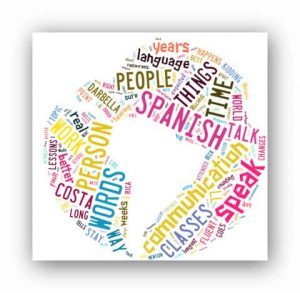
Synopsis: Communication is All About You — as with most things, how well you communicate is about how you choose to do things!
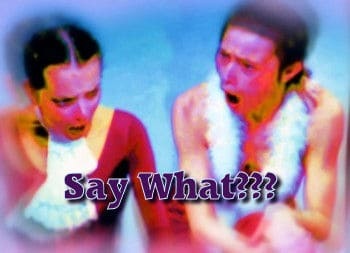 So, for the longest time (18 years and counting) Darbella and I have been working on learning Spanish.
So, for the longest time (18 years and counting) Darbella and I have been working on learning Spanish. We did a week long home stay back in 2005 and again a decade later, have attended classes, and work through Duolingo lessons daily.
We’ve done classes in Ontario, and have studied at a language school in Nicaragua.
I mention this because we really do understand a lot of Spanish, do well with our lessons, and can do things like shop, order in restaurants… and I’ve even done tech support in Spanish.
The only place where things fall apart is when people actually speak Spanish to us.Well, kidding but only a bit.
Example: The grounds-keeper at our condo in Costa Rica speaks to one of the maids. I’ll get about two words.
What happens for me is this:
If I know what the topic is , I can relax and just let the words flow over me, and I’ll “get” 90% of it. And I can answer in short sentences. The trouble starts if I overhear a conversation, but don’t know the topic. Or, if someone changes the topic.In other words, so long as I am in charge and steering things, I’m kind of fluent. As soon as another person has the audacity to do something unexpected, I might as well wave a white flag.
And this is how it goes with all communication.When I teach the Communication Model Darbella and I use, I get blank stares, and sometimes, “You’ve got to be kidding me! I can’t talk like that all the time. People will think I’m nuts!”

Note: And if your present relationship needs work, well… check out The. Best. Relationship. Ever. It’s my relationships book… you’ll find all the help you need!
But you have to practice, all the time!If you don’t use the Model all the time, in all circumstances, you’re going to get tripped up. When?
When the other person veers off, changes the subject, or does something unexpected. Just like me, and Spanish.
But here’s the real point: it’s not the fault of the other person! You! Listen Faster!!
You! Listen Faster!!In Costa Rica, many expats “complain” about the locals using “rapid fire Spanish.” Words get slurred together, and it really is hard when native speakers get going with each other.
But that’s not the fault of the Costa Ricans. That’s due to “my” inability to keep up.
Now, sure, I can utter “lentamente” and hope the other person will slow down, but really, the issue is me. I’m not hearing well. If I want less distress, I need to hear better, and not to freak out.
I need to let go of expecting others to make is easy for me.
Just like all communication.Imagine a world where everyone demands that the other person speak and act “as expected.”
Now, usually, people do have this expectation, but it only goes one way. It would be like me expecting that all of Costa Rica ought to speak the way I want.
Most people have this idea when they talk with spouses, family, friends, whomever.And then, they get pissed off when the other person makes the same suggestion to them.
The best communicators are the people who speak always and only for themselves, while adapting to the thrusts and parries of the person they are talking with.
Sure, it’s nice, say, to be in a class, speaking Spanish with other gringos, while a bilingual teacher listens to and comments on each word, but this is emphatically not what happens in real life.
In real life, communication can be messy, get bogged down, can even be avoided for years. Until it’s too late. But that only happens if you just stand there and blame “the Costa Ricans.”
I can’t get Darbella to speak better Spanish, and she can’t get me to speak better Spanish. I can work on mine, and encourage her to work on hers, and that’s it from my side.
Same with day-to-day communication. I can show up, and to the best of my ability do it “right,” and that’s it. Dar’s going to show up and do what she does.
Now, of course, we wouldn’t have stuck with each other for almost 40 years had we not, at the same time and in our own way, both committed to endless practice with the Communication Model.
We do as well as we do because, in the end, our goal is “fluency” in Wayne-and-Dar-speak. Period.So, no demands on others to “do it right.” Just a demand on myself to do it well, and to do it well-er tomorrow.
Because, like everything else, the game is about learning to be present in the world, despite what the world is doing.
February 8, 2021
5 ways to pay attention
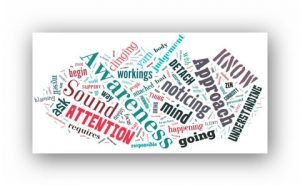
Pay attention — to yourself
 Psst!! Hey!!!
Psst!! Hey!!!Want more great writing designed to help YOU to shift your behaviour?
Check out Wayne’s books!!!
 Clinging, and the end of clinging…The 4 Noble Truths
Clinging, and the end of clinging…The 4 Noble TruthsThe Buddha’s first lecture concerned “waking up” from the illusion of suffering. The 4th “truth” was what is called the 8‑fold path.
Here’s one of them, as it applies to learning to pay attention.
Sound AwarenessI used to teach clients about paying attention by unpacking the the acronym NAIL (Notice, Accept, Investigate, and Let Go.)
And “noticing and accepting” is what Sound Awareness is all about.
Sound Awareness requires a single-minded focus on “just this.”Prior to implementing Sound Understanding and Sound Conduct, our mental lives are non-present and non-responsible.
We only begin to discover this if we pay attention directly to our mind games, despite the “slippery wishes” of the mind. (slippery mind)

I’m so together, so clever, and such a Saint. Now do it my way!
For example, many of my clients worked on overcoming their blaming behaviours. They did this by noticing that they were angry or sad, and how this led them—immediately and automatically–to blame the nearest person.
The first move was to let go of blaming language. They learned to say, “I am angering myself.”
Good first step, but… it’s not so simple. We are hard-wired to point outward.
So they’d think (or say,) “If only I had married someone who was more centred and Zen-like. Then, my tranquillity wouldn’t be disturbed.”
It was the same blame game but stated in an artificially more self responsible way.
 Approach # 1: It’s always, always about you
Approach # 1: It’s always, always about youThere is no escaping this reality. In the 4 Areas where we can pay attention, (mind, feeling, body, and phenomena) the workings of all are determined by how we choose to see them.
It is my responsibility to bring bare attention or bare noticing to each of the 4.
Slippery mind will get more and more clever, but all it ever says is, “Well, it may just be me messing with myself, but THIS time…”
Awareness requires that we look, with clear eyes, at our perception of the 4 areas.
Immaturity is this: “This is happening (say, to my body) and it is bad, painful, wrong.” Maturity is this: “This is what is happening to my body.” All data, no “this is bad,” or “I’m disturbing myself over…”What’s going on for you is what is going on for you. Watch. Notice.
 Approach # 2: You know nothing about anything outside of you
Approach # 2: You know nothing about anything outside of you This is the realm of phenomena from the 4 Areas. This is rejected strongly by our slippery mind. We cling to the belief that we know what’s up for others, and understand the workings of the world.
I find this quite odd, as most people I meet are woefully ignorant of their own internal theatre, and struggle mightily against shifting much at all of their view. But boy, do they know what’s up for others!
Here’s a hint: you know nothing about anything!
Sound Awareness teaches us tp pay attention to what’s going on. I call this bare awareness, or awareness stripped of judgement and interpretation.
I was asked the following question:
“In respect to good and bad, or the fact that it doesn’t exist, that all is neutral, it is a challenge. If I do not use judgement for things, would there not be chaos? I do not leave a 5 year old to look after themselves all day because my judgement tells me that would not be wise. If there is no good and bad, what about teaching our children values?”
I would ask, “What good does adding an additional layer do?
If I observe myself gently, I seen see that I “know” how I wish to deal with any phenomenon. Adding a layer of judgement just delays things.
We do not teach children values.
Wise people live their values, and children notice.
A friend’s son (9 years old or so) had cut a baseball apart (boy, did that bring back memories) and had wrapped the considerable internal yarn around his hand. The yarn was attached still to the rubber core. He asked his mom for a scissors.
She immediately leapt to the assumption that his hand was trapped in the yarn, and that he wanted out. She got right into, “We gotta get you out of there!” mode. I took out my knife, and opened it. He walked over to me, and sliced the yarn, freeing the rubber ball. The mom was like, “Oh!…”
Want to learn more? Check out my book, Half Asleep in the Buddha Hall
 Approach # 3: Be curious
Approach # 3: Be curiousThis would be the elegant approach to the last story. When in doubt, (which, really, is all the time) ask. When you want something, ask.
Sound Awareness is a dialogue between you and you, and you and the universe. As you begin to drop the “know-it-all” stance, it becomes clear that it’s all pretty vague and unclear out there.
And inside, too.
I recognize that every learning in my life has come right after admitting I had no clue. My therapist used to say, “Practice not knowing.”
Curiosity as opposed to stubbornness was the key to opening the door.Curiosity is a bit like childlike wonder.
I loved the look on that kid’s face as he wrapped yarn around his hand and bounced the inside of the baseball around. This was his very first experience with the guts of a ball, and I twigged back to when I’d done the same thing. I told him about some of my experiences, and wished him well with the exploration.
Curiosity allows me to deeply engage with the phenomena I am viewing. The Buddha used the term samadhi to describe this laser-like focus on what is “right there.” He indicted that such attention leads to delight and ease born of detached curiosity.
 Approach # 4: detach
Approach # 4: detach Detachment is not the same as not caring. Detachment is about dropping clinging. To what, you ask?
See above! It’s dropping our attachment to our stories, our judgements, our blaming, and to our mind games.
Once I have detached myself from them, and also from attaching to a particular outcome, I can be fully and completely present with this moment.
This is not the same as not caring. It’s not walking around in a calm, preternatural fog. It’s paired with “delight,” remember. It’s all about complete, vital presence as one enacts and interacts with life.
Sound Awareness requires laser-like presence, without clinging to anything. This is difficult, as most people are deeply attached to their pain and drama, and also deeply attached to the idea that the cosmos should cooperate in a “make me happy project.”
Silly people want the world and others to give a shit,
and are deeply annoyed that it and others don’t.
So, detach. Let It Be, to quote a Beatles album. It is as it is, until it isn’t.
This is also not to say that goals, projects, desires have no place. Remember, the real cause of suffering is clinging, not desire per se.
The way this plays out is to do whatever you do with full attention and full involvement, while detaching from a specific outcome (the clinging part.)
Sound ConcentrationApproach #5: Sound ConcentrationThe word the Buddha used is dhyana, which is the precursor to the word Zen. And the essence of Zen is shikantaza, a term coined by Dogen, the founder of the Soto school of Zen.
The word shikantaza translates, ““nothing but (shikan) precisely (ta) sitting (za).”

Sound Concentration is what happens when we are able to simply be present, moment-by-moment, with what is, and what arises. It happens as we learn to sit with ourselves and let go of the clinging and the games.
As I’ve said before, the way to strengthen presence is to practice shikantaza.
January 18, 2021
Look Wide, Focus Narrow
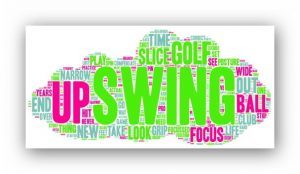
Look Wide, Focus Narrow — learning to shift your focus means you automatically see a “bigger picture”
 Psst!! Hey!!!
Psst!! Hey!!!Want more great writing designed to help YOU to shift your behaviour?
Check out Wayne’s books!!!
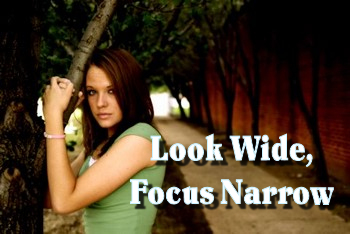
Not long ago, I was rooting around in some old photos, and I came upon one of me playing golf. In Scotland, in 1986. I stopped playing golf many years ago, paradoxically after 2 great years of finally being able to break 90 every time.
Here’s a thought: A wide focus or a narrow focus isn’t enough. What we need is a divergent focus. In life as in golf, we need to create multiple foci.Anyway, here are two golf stories.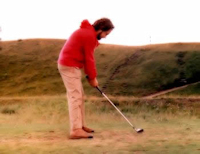
I started playing golf in High School, and got serious about it during Seminary.
One of the guys in my class had been a semi-pro; he’d tried the Canadian Pro Tour, but couldn’t handle the stress and pressure, so he decided to be a Minister. (I’m grinning as I write this–talk about “out of the frying pan, into the fire.”  )
)
Me, I was an average hacker; I thought it remarkable when I finally broke 100 on a regular basis.
Like most “hackers,” I had a wicked slice. I often played on the adjacent fairway, so off track were my fairway shots.
I bought golf books; I bought golf magazines. Over and over, I read that I should correct my slice by adjusting my grip.This involves rotating your hands on the handle of the club, so that the swing-through puts a spin on the ball to counter the spin that causes the slice.
In practice, what this meant was that no matter how hard I tried, I couldn’t get distance. All of my swing’s energy was lost as the counter-spin fought for control of the ball.
And accuracy was out of the question.
A couple of decades later, Darbella decided to take up golf, and booked lessons. (She’d seen my slice, so she didn’t ask me…  )
)
Lessons had never occurred to me, as “Real men don’t need no stinkin’ lessons.” I was self-taught, and proud of it.
But a little voice inside that I trust piped up and said, “Can’t hurt.”Dar and I had simultaneous lessons, and Susan, the woman who instructed us, was “up there” in the ranks of Canadian pros.
She instructed me to tee up, take a 5‑iron, and hit a green 150 feet out. I gulped, teed up a ball, grabbed my trusty 5‑iron, and gripped the club in my choked, “correct the slice” grip.
She fairly flew to my side. “Whoa! Relax! Take a neutral grip!”
I demurred, saying that if I did, someone standing to my right was going to have a golf ball in his/her ear. She insisted, and backed up, letting me swing. Sure enough, the ball took off, turned 90 degrees to the right and landed 150 feet out and about 50 feet to the side of the green.
I won’t bore you with the conversation, but Susan walked up to me and said, “OK. Swing slowly and stop at the top of your swing.” I did.
She told me to hold the club at the top. She then proceeded to completely alter my posture at the end of my swing.
She pivoted my hips, re-set the position of my club and otherwise fiddled with my anatomy until I was in an completely unfamiliar and, of course, uncomfortable, posture.
As is typical of new things…She said, “Memorize this posture with your body.” Having done Martial Arts for decades, that directive actually made sense.
She then directed me to swing at half speed (no ball, just a tee for a target) and be sure each time I swung that I ended up in the new position.
I started, and she went to work on Dar.
After 50 swings she yelled over and told me to practice swing at full speed.After another 20 minutes of air-ball, she sauntered over, teed up a ball for me, and told me to hit the green. I started into my, “But you saw what happened last time; I have to correct my grip” whine.
She looked me square in the eye, and said something I said to clients for my entire career (except for the golf part…):
As I said, I recognized the idea, and thought, “Well, that might apply to life, but it can’t apply to golf.”“If you focus on the results you want, and finish the swing in the ending posture you’ve been practicing, everything will take care of itself.”
But I’d paid my money, so I decided to risk it.
I took a swing, forced my club to end up where I was “supposed to,” and my ball sailed out 175 yards, dead straight, and past the pin. I realized that, for years, I’d been hitting 25 yards too hard, to compensate for my slice.
No wonder a round of golf was so exhausting–Screwing up takes energy.I was going to write that Susan smiled; she actually smirked.
I hit a succession of balls, and 90% went straight. If I “lost” the end position, I sliced. If I “found” the end position the ball went straight. My game dropped into the low 90s immediately, and within a month or so, I was hitting the occasional 88.
My “problem” was that my entire focus was on my slice. Everything I did, every shot I planned, every approach I contemplated, had as it’s goal, “How can I do this and minimize the damage of my uncontrolled slice?” What this meant, in practical terms, is that I was spending so much time compensating for my slice, that I never allowed for the possibility that I didn’t have one!Susan came along and reset my entire game by teaching me to fix my presuppositions.
As soon as I stopped acting like I had a slice, and then compensating for it, I no longer had a slice.
By focusing wide (seeing myself as a golfer, not a golfer with a slice) and then describing the behaviour and actions I wanted to achieve (the setting up of the end posture,) I could “focus narrow” on the actual target. (Of course, then I actually had to continually do the new behaviour!!!)
Notice how much better this is than simply accepting my fate as a “slicer,” narrowing down my game to compensating for that, and never, ever being able to pick a target for my ball.

Note: If you want to learn more about this topic, and want to look at it from a Western perspective, have a look at my book, This Endless Moment.
The other golf story is shorter.The idea of look wide, focus narrow applies in other ways.
There were many occasions where I’d march up to my ball, look at the pin, grab a club, adopt my stance, visualize the shot, remember my ending posture, gauge the distance, and swing the club. My contact was perfect, with exactly the right swing speed.
Off the ball would lift, heading dead for the pin, only to collide with the branch sticking out into the fairway.
My narrow focus was perfect… if only that damn branch wasn’t there.
Had I looked wide, I’d have seen it, but then I couldn’t blame the tree 
I was talking with a friend who is narrowly focussed on his relationship failures. He is expert at seeing what he does wrong, and focussing on that for… years. As a result, he’s often shut down, sad, etc.
He is narrowly focussed on his own mistaken belief (like my years of thinking I was slicer…) about his ability to relate with elegance, despite the fact that he does… with almost everyone.
But he is heavily invested in being the “one to blame.” His focus is on that, and that alone.I regularly invite him to look wider. To see the games everyone is playing… it’s not just him. As he widens his gaze, he might actually notice the things he was pushing out of his viewpoint–like that he’s actually a pretty good “relater.”
From there, from the wider view, the hard work begins. He needs a clean swing and a focussed belief in himself… and that flies in the face of what he continually tells himself.
Life situations are always bigger than we perceive them to be, and never more so than when we are setting ourselves up to have a problem over something or with someone.When in conflict, we let ourselves be pulled into the drama (the ineffectual story,) and all evidence of “things to the contrary” fall by the wayside.
Like the branch overhanging the fairway, they are there, but unnoticed, because we simply refuse to look for “surprises.”
Getting past this requires new thinking, followed by new behaviour. Every time. To beat the golf analogy to death, I had to give up my grip correction forever, and swing in a new and initially uncomfortable, unfamiliar way. If I went back to correcting, I lost control.
The new behaviour does become habitual; it just takes a ton of practice, and no excuses.And then, we play a harder course, or a branch sticks out.
If we stay completely focussed on technique, we miss subtle changes and set-ups that will lead to missed shots or bad lies. The only hope is to learn to focus narrow, THEN look wide — and with practice (again!) see the little things that have arisen “this time.”
But then, it’s right back to the new way of doing things, PLUS an adjustment to compensate for the thing you’ve spotted. You turn your feet a bit, and swing.
Notice your “compensating behaviours.”
What are you doing to justify clinging to a dysfunctional view of yourself? Who are you blaming for your dramas? Who are you looking for to rescue you? What would happen if you stopped whining about how tough your life is, and simply looked wide, noticed how “perfect” life is, and then focussed narrow on choosing to live your life for a position of comfort and assurance?It’s your game. Maybe it’s time to choose to lower your handicap.



